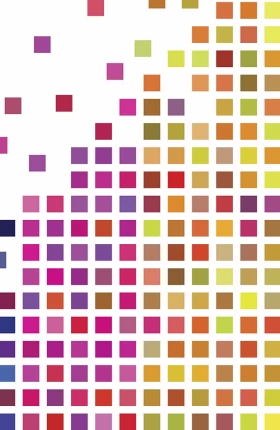Until recently, the need for life protection coverage in Europe was relatively limited, with households supported by strong public social security systems. But this is changing. As governments scale back benefits and transfer more financial responsibility to individuals, European households face widening coverage gaps across multiple areas of life insurance—including retirement savings and protection relating to premature death, disability, and critical illness. At the same time, demographic pressures and rising consumer expectations are amplifying the demand for more personalized and accessible coverage.
Fortunately, longstanding barriers to customer engagement have eased, opening new opportunities for European insurers to close the protection gap. However, meeting the moment will require bold innovation. Insurers must rethink offerings, channels, and engagement models to reflect how people are living, working, and aging today.
Stay ahead with BCG insights on the insurance industry
European insurers can draw lessons from innovations pioneered in North America and the Asia-Pacific region. In these markets, leading insurers are engaging customers digitally, offering wellness solutions, and establishing integrated ecosystems and embedded insurance models. It’s time for the European insurers to adopt a similar approach that aligns with modern lifestyles and the rising need for protection.
Europe's Protection Challenge
Household-level protection is weakening across much of Europe, even in traditionally well-insured markets. According to Swiss Re’s Mortality Resilience Index, the share of financial exposure that is already prefunded in the event of a breadwinner’s death has declined in Western Europe and the Nordics, falling from 70% in 2012 to 64% in 2022. This six-point drop has driven a sharp rise in the protection gap—from $29 billion to $40 billion, an increase of nearly 40%.
Several interconnected factors underpin Europe's protection gap.
Weakening Safety Nets. Ongoing fiscal pressures have substantially strained public safety nets across Europe, leading to significant shortfalls in health care funding, increasingly restrictive pension schemes, and curtailed disability support.
Government cost containment measures are weakening public protection. For example, France and Spain have raised the retirement age, and the UK is tightening access to disability benefits. At the same time, retirement systems are changing. In the Netherlands, the move from collective defined-benefit plans to individual and noninsured defined-contribution savings has helped lower costs but often strips out embedded life and disability coverage. These developments underscore a broader erosion of the safety net—leaving individuals with growing responsibility to pay for their own health care and long-term financial needs.
One stark indicator of this erosion is the rise in catastrophic health spending—defined by the World Health Organization as out-of-pocket health expenses that exceed 40% of a household’s capacity to pay. When this share rises, more families are forced to sacrifice essentials such as food, housing, or heating to afford medical care. As of late 2024, the WHO reported that up to 20% of households across Europe face this kind of financial hardship, with out-of-pocket costs for medicines being the primary driver. The burden falls disproportionately on the poorest households, and the trend is worsening: in 28 out of 40 countries surveyed, the incidence of catastrophic spending has increased over time, with an average rise of 1.7 percentage points.
The incremental nature of this trend makes it especially challenging. Each policy change, cost shift, or benefit reduction may appear minor in isolation, but together they compound over time. As a result, the true scale of the impact becomes visible only after years have passed. This slow erosion of the safety net masks the urgency of the problem, making it difficult to recognize the long-term risks or to mobilize around solutions.
Shifting Demographics. Europe’s population is aging rapidly, with an average of 16,000 people turning 65 each day across the EU, according to Eurostat. Although Europe's total population is projected to decline in the coming years, the number of older adults will continue to rise in relation to the working-age population. The European Commission’s 2024 Ageing Report highlights that the ratio of people aged 65 and older to those aged 20 to 64 is increasing sharply across all EU member states. It rose from 29% in 2010 to 36% in 2022, and is projected to reach 59% by 2070, with most of that increase occurring by 2045. These demographic trends sharply amplify the demand for comprehensive insurance solutions, especially for long-term care, critical illness, and chronic health conditions.
Changing Consumer Preferences. Consumers expect integrated wellness solutions, proactive health management, and digital interactions. For example, a LIMRA study found that nearly all life insurance customers are interested in improving their performance in at least one wellness area, notably exercise, sleep, or diet. (See Exhibit 1.) Another LIMRA study found that the percentage of customers willing to participate in an insurance wellness program jumped 10 points from 2016 to 2024, rising to 40%. At the same time, employers are becoming more active in promoting workforce well-being, launching internal wellness initiatives, and seeking partnerships with insurers and digital health providers. This creates opportunities for insurers to co-develop holistic wellness propositions that serve both individual and group markets. However, European insurers have trailed insurers in other regions in responding to these evolving expectations.

Lagging Innovation. European insurers lag behind their counterparts in more advanced markets in adopting digital technologies, streamlined processes, and integrated insurance ecosystems. The sluggish adoption has impeded their efforts to efficiently and effectively address evolving consumer needs.
Longstanding Barriers to Customer Engagement Have Eased
Historically, Europe’s extensive reliance on public coverage for health, disability, and accident insurance, combined with employer-sponsored group life and disability benefits, has left limited room for private retail engagement initiatives. For instance, in 2022, consumers’ out-of-pocket payments accounted for only 15% of EU health care spending—significantly less than in other regions. Additionally, distribution channels controlled primarily by banks and brokers have prevented insurers from establishing direct customer relationships.
Recent shifts, however, are creating significant opportunities for insurers. In addition to weakening safety nets, the rise of micro-enterprises and new work models, such as digital-platform employment, has left more individuals without adequate protection. In 2022, for example, more than half of digital-platform workers in the EU lacked critical insurance coverage.
At the same time, emerging ecosystem-based, embedded, and digital distribution models offer insurers fresh pathways for customer interaction, allowing for direct engagement and richer data collection. Highly valued services, such as health care navigation, diagnostics, and wellness initiatives, significantly increase customers’ willingness to share data and engage with insurers. The improved unit economics resulting from higher customer engagement and better data insights can strengthen profitability.
Furthermore, new regulatory developments, including the European Health Data Space Regulation and the EU’s AI Act and consumer duty directives, provide clearer guidelines for insurers, emphasizing transparency, fair pricing, and consent-based data governance. These regulatory frameworks incentivize proactive innovation and reward insurers that can clearly demonstrate fair value and compliance.
The upside is clear: the total average premiums for protection insurance in Europe currently represent only 9% of the total life insurance market, and recent growth has been modest—but forecasts point to a period of stronger expansion through 2028. (See Exhibit 2.)

Global Trends: Digital, Holistic, and Embedded Insurance
Globally, the insurance sector is being transformed through digital innovation, holistic wellness ecosystems, and embedded insurance.
North America: Digital Excellence and Personalization. Insurers in North America have integrated digital solutions directly into the customer experience. Digital underwriting, faster claims processing, and AI-driven personalization are enhancing engagement and operational efficiency.
For example, SBLI has partnered with Techficient, an insurtech company, to launch EasyTrak Digital Term Life—a fully digital, instant-issue term life insurance product that eliminates the need for medical exams or attending-physician statements. Powered by AI, predictive data, and advanced underwriting technology, the platform delivers real-time quotes, fraud detection, and automated decision making through a streamlined, user-friendly interface. With minimal human intervention, customers can obtain coverage quickly, enhancing accessibility and satisfaction. The result is a radically simplified, faster, and more scalable approach to life insurance.
Prudential Financial has teamed up with Neutrinos to improve how people obtain life insurance in the US. Through its Simplified Solutions group, Prudential is using Neutrinos’ digital platform to help individuals and families buy insurance more easily, especially through trusted websites and services they already use. By enabling first-time-right underwriting through AI-driven case evaluation, the solution significantly boosts both speed and personalization. The result is a shift from procedural underwriting to an intelligent, omnichannel-ready model that enhances efficiency, consistency, and customer experience.
Asia-Pacific: Integrated Insurance Ecosystems. Asia-Pacific insurers are leaders in the global trend toward creating holistic insurance ecosystems that integrate financial protection with broader health and lifestyle services, such as health management, financial literacy, and retirement planning. (See Exhibit 3.) The ultimate goal is to expand further into comprehensive wellness coverage, integrating physical health, financial stability, and mental wellness into cohesive ecosystems. Embedding insurance in various digital interactions, such as through health or retirement planning apps, further increases products’ relevance and accessibility.

Ping An, one of China’s largest financial services groups, is building comprehensive digital ecosystems that combine health management, lifestyle offerings, and financial services. For example, its Integrated Finance + Healthcare and Senior Care strategy integrates online and in-person health care, elder care, and financial services. Customers gain access to tens of thousands of physicians and hospitals, while Ping An serves as the payment provider. This holistic ecosystem not only supports senior wellness and independence but also demonstrates the potential for blending financial and health care services to meet the complex needs of aging populations.
Taikang Life, one of China’s largest life insurers, has expanded beyond traditional insurance by establishing Taikang Community—a separate health and elder care business supporting the country's aging population. Founded in 2007, the community offers a full ecosystem of services, including housing, medical care, and health management for retirees and seniors. Policyholders have priority access to the community, enhancing the value of Taikang’s insurance products. The company operates a network of retirement communities and hospitals in major Chinese cities, with facilities offering resort-style living, round-the-clock care, and hospice services. This integrated model fills a critical market gap and positions Taikang as a holistic provider of financial and elder care solutions.
In addition to these local players, several multinational insurers operating in the region—such as AIA, Prudential plc, and Manulife—are pursuing similar strategies.
Europe: Early Steps in Holistic Models. European insurers have begun exploring these advanced trends, though they have yet to achieve comparable scale and integration. Swiss Life, for example, has taken meaningful steps toward an integrated-care model with its Pflege- & Vermögensschutz (Care & Asset Protection) offering, which combines long-term care annuity insurance, flexible capital access, and family protection. Assets remain fully accessible until the onset of care needs, allowing for flexible capital access throughout the policyholder’s life. In the event of death—whether before or after the onset of care—relatives benefit from a built-in family protection guarantee. The product also includes a wide range of assistance services, delivered in partnership with Malteser International, such as dementia counseling, physiotherapy, legal advice, household support, and transportation to care facilities. Available to individuals aged 18 to 75, this product has a broader eligibility window than many competitors’ offerings.
Bridging the Gap
To close the protection gap, European insurers should prioritize several actions:
- Invest in digital innovation. By investing in AI-driven risk assessments, automated underwriting, and streamlined digital claims processes, insurers can offer faster, personalized coverage—replicating successful North American practices.
- Offer holistic wellness-oriented coverage. Expansion into areas such as long-term care, critical illness, and proactive wellness management is essential. Insurers should draw inspiration from comprehensive Asian ecosystems and pioneering European models.
- Form strategic ecosystem partnerships. Insurers should collaborate with health-tech firms, financial institutions, and employers to establish integrated insurance platforms. These partnerships, similar to Ping An's robust ecosystems, can enhance consumer relevance and accessibility.
- Embed insurance into daily interactions. By integrating insurance offerings into commonly used digital platforms—such as banking apps, health care apps, and e-commerce—insurers can enhance customer convenience and boost product uptake.
- Empower the frontline. Investment in communication and sales enablement is also essential. Insurers need to equip agents and brokers with tools—such as digital guidance, customer insights, and AI-powered “bionic” advisory systems—that enable more relevant, confident, and personalized conversations with clients. Equally important, insurers must invest in effective training and actively support long-tenured salespeople in integrating these new capabilities into their work.
Closing Europe's protection insurance gap is both a necessity and an opportunity. European insurers are positioned not merely to catch up with global counterparts, but to proactively redefine insurance through innovation and strategic collaboration. Embracing global benchmarks and best practices from North America and Asia-Pacific will enable insurers to meet evolving consumer needs, drive significant growth, and enhance financial resilience for individuals and governments across Europe. The future of protection insurance in Europe starts with innovation today.






